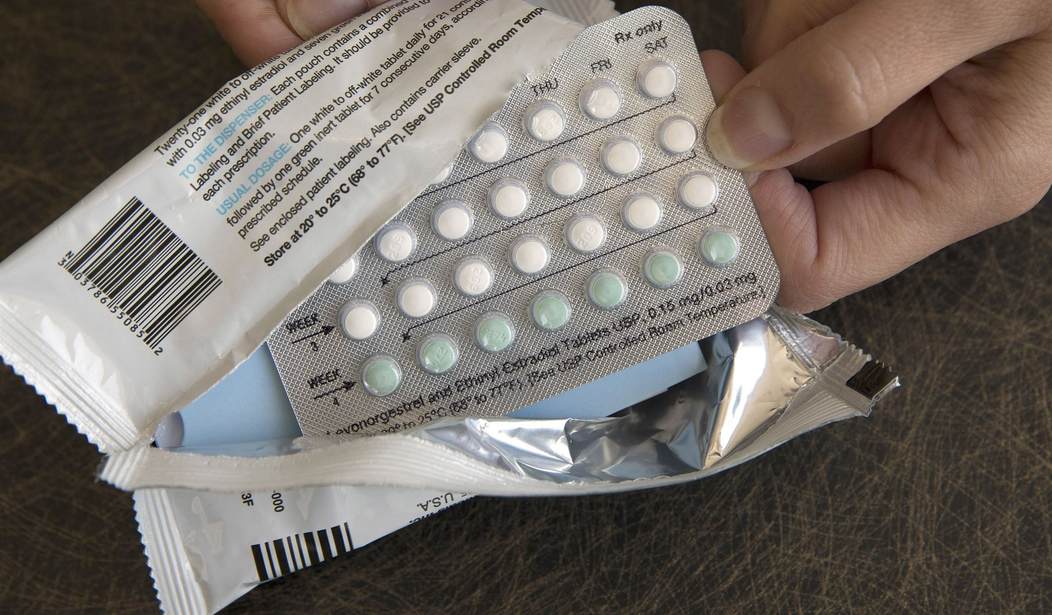The birth control pill — or “the pill” as it’s commonly known in everyday parlance — revolutionized society in ways that are often under-appreciated. Jordan Peterson has discussed the pill’s wide-ranging impacts on the society, economy, and politics at great length, a concept that I credit him for introducing me to.
Related: Huffington Post Celebrates Prospective New Drug That Induces Male Infertility
People often assume that the tireless marchers for women’s suffrage (not to be confused with “sufferage”) and the bra-burners of the 60’s ushered in the modern era of gender equity, or Equity™, depending on how organic and/or genuine and/or desirable one believes it to be.
But, in fact, it was a little pharmaceutical invention that may have done far, far more than any Women’s and Gender Studies faculty to take women out of the home and put them in the workplace.
Among the many social effects of the pill, vis a vis its modulation of female sex hormones, may be the type of male that women find attractive and ultimately end up in relationships with, and what that alteration in female attraction may have done to modulate male behavior and society as a consequence.
Via Archives of Sexual Behavior (emphasis added):
Women who are regularly cycling exhibit different partner preferences than those who use hormonal contraception. Preliminary evidence appears to suggest that during pregnancy women’s partner preferences also diverge from those prevalent while regularly cycling. This is consistent with the general assertion that women’s mate preferences are impacted by hormonal variation. During pregnancy, women’s preferences are thought to closely resemble those displayed by women who are using hormonal contraception…
Women who use hormonal contraception have been shown to display different mating preferences and behaviors than women who are regularly cycling…
Upon initiation of hormonal contraception, women prefer lower levels of masculinity in their male partners. Moreover, these researchers showed that women who met their partner while using hormonal contraception were actually paired with men who had lower levels of masculinity as assessed via both facial measurements and perceptual judgments.
Numerous studies have examined this phenomenon, usually by showing female test subjects separated into cohorts on and off the pill a bunch of men’s faces and measuring how they rated their attractiveness — for example, via Psychoneuroendocrinology (emphasis added):
To examine the impact of oral contraceptive (pill) use on preferences, we tested for within-subject changes in preferences for masculine faces in women initiating pill use. Between two sessions, initiation of pill use significantly decreased women's preferences for male facial masculinity but did not influence preferences for same-sex faces…
Both facial measurements and perceptual judgements demonstrated that partners of women who used the pill during mate choice have less masculine faces than partners of women who did not use hormonal contraception at this time.
The gist of the impact of the pill on women’s hormones is this: fertile women not on the pill, when they are ovulating, are heavily estrogen-dominant. As a result, they are more attracted to dimorphic male characteristics like deeper voices, broader jaws, and confidence/dominance.
Women who are on the pill never cycle into this estrogen-dominant state, and instead have consistently low levels of estrogen and relatively high levels of another female sex hormone, progesterone (the active ingredient in “the pill” being literally synthetic progesterone), which causes the body and brain to behave as if the woman is already pregnant.
This phenomenon has multiple implications for society — aside from the obvious preferences acted upon by women, who are after all the “selector sex” in terms of determining which genetics are passed on — such as:
- Sexual satisfaction
- Male behavior in attracting mates
- Infidelity rates
- Divorce rates/marriage quality










